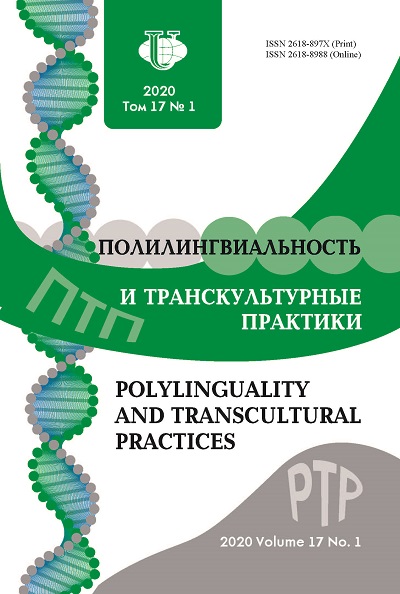The Bottle Inscribed with “X”, or Search for the Unknown in Alisa Ganieva’s Novel “The Groom and the Bride”
- Authors: Shafranskaya E.F.1,2
-
Affiliations:
- Russian state University for the Humanities
- Moscow Pedagogical University
- Issue: Vol 17, No 1 (2020)
- Pages: 65-77
- Section: LITERARY SPACE
- URL: https://journals.rudn.ru/polylinguality/article/view/23170
- DOI: https://doi.org/10.22363/2618-897X-2020-17-1-65-77
Cite item
Full Text
Abstract
The plot of Alisa Ganieva’s novel “The Groom and the Bride” is built around the expected and failed wedding. given against the background of everyday Russian-speaking non-Russian life. The article considers a narrative series woven from Quranic and Sufi images and motifs which can be considered as one of the intrigues of the novel. The author of the article tries to “decipher” the Muslim subtext of the novel, which, presumably, is not accidental. In particular, the mythopoetics of the image of Khalilbek is examined, perforating for all texts of Alisa Ganieva (“Salam, Dalgat”, “Shaitans”, etc.), whose roots lead to the Quranic metatext, namely to the image of Khidr (or Khizir-Bobo). Whether the writer’s intention coincides with the reader’s perception is argued by the author of the article.
Keywords
About the authors
Eleonora F. Shafranskaya
Russian state University for the Humanities; Moscow Pedagogical University
Author for correspondence.
Email: shafranskayaef@mail.ru
Doctor of Philology, Associate Professor, Professor of the Department of Russian Literature, Institute of Humanities
6, Miusskaya square, Moscow, 125993, Russian Federation; 4, building 1, 2nd Agricultural passage, Moscow, 129226, Russian FederationReferences
- Ganieva, A. 2019. Zhenih i nevesta: Roman. Moscow: AST: Redakciya Eleny Shubinoj publ. Print. (In Russ.)
- Aflatuni, S. 2006. Glinyanye bukvy, plyvushhie yabloki: Povest’-pritcha [Clay letters, the floating apples]. Journal Oktyabr’. 9: 3—63. Print. (In Russ.)
- Ganieva, A. 2010. Salam tebe, Dalgat!: Povest’, rasskaz, esse [Salam to you, Dalgat!]. Moscow: AST: Astrel publ. Print. (In Russ.)
- Dandes, A. 2003. Fol’klor: semiotika i/ili psixoanaliz [Folklore: semiotics and/or psychoanalysis]. Moscow: East literature publ. Print. (In Russ.)
- Ernst, K. 2002. Sufizm [Sufism]. Translated by A. Garkavyi. Moscow: FAIR-PRESS publ. Print. (In Russ.)
- Piotrovskij, M.B. 1992. Xadir [Hadir]. In Mify narodov mira: Enciklopediya: V 2 t. [Myths of people of the world: Encyclopedia: In 2 t.]. Moscow: Soviet encyclopedia publ. T. 2. Print. (In Russ.)
- Xismatullin, A.A. 2003. Sufizm [Sufism]. St. Petersburg: Azbuka-klassika; St. Petersburg oriental studiespubl. Print. (In Russ.)
- Trimingem, Dzh.S. 2002. Sufijskie ordeny v islame [Sufi ordena in Islam]. Translated by A.A. Staviskaya. Moscow: Sofiya; Gelios publ. Print. (In Russ.)
- Porohova, V., eds. 2004. Koran [Koran]. Translated by Iman Valeriya Porohova. Moscow: RIPOL klassik publ. Print. (In Russ.)
- Yanyshev, S. 2017. Umr. Novaya kniga obrashhenij [Umr. New book references]. Moscow: Art xaus media publ. Print. (In Russ.)
- Andre, T. 2003. Islamskie mistiki [Islamic mystics]. Translated by V.G. Notkina. St. Petersburg: Evraziya publ. Print. (In Russ.)















